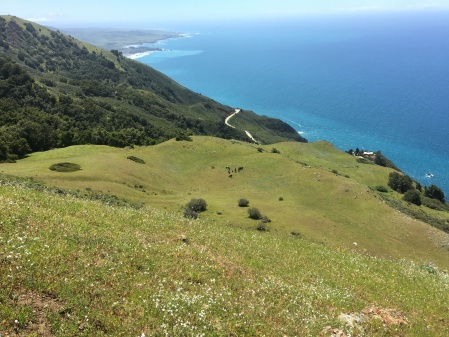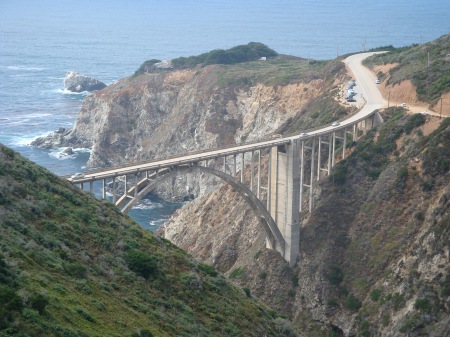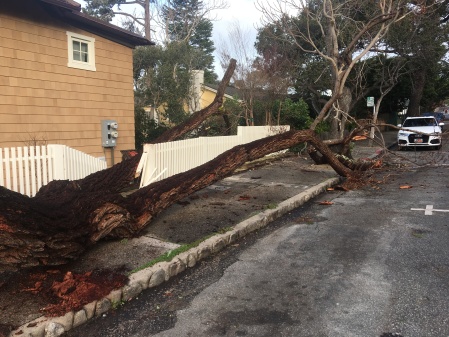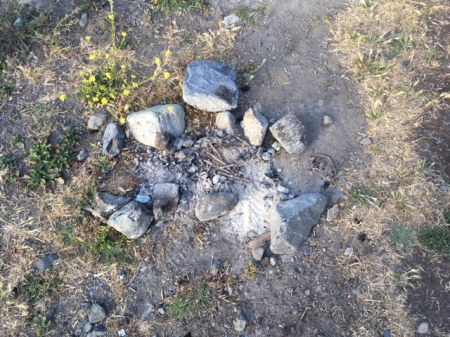The first storm of the season brings snow to Mt. Toro and the Sierra de Salinas
A couple of weeks ago it seemed like the rainy season might never arrive. But that all changed last Tuesday (November 26) when a much-hyped “bomb cyclone” sent a wave of rain sweeping across the state.
For the record, a bomb cyclone is simply a mid-latitude weather system that strengthens rapidly enough that it drops in pressure by 24 millibars, or more, in 24 hours. A storm that strengthens more slowly can still get just as strong.
This storm met the definition easily, as it shed 43 millibars in 24 hours, while approaching landfall near the California/Oregon border. As it came ashore, the Crescent City Airport recorded a pressure of 973.4 millibars, a record low for the state of California. Rain and snow then spread across the state, closing roads and complicating Thanksgiving travel plans.
Here in Monterey County, the highest rain totals were recorded on the southernmost coastal ridges, with Chalk Peak, above Pacific Valley, and Three Peaks, above Salmon Creek, receiving more than three inches. The central Santa Lucia Mountains got much less, with Mining Ridge and the Ventana Double Cone getting barely more than an inch and Black Cone and Pinyon Peak getting less than an inch. The northernmost hills got a bit more, with White Rock Ridge, above Garrapata logging over two inches.
Runoff from a deluge unleashed by the bomb cyclone carved ditches across the Carmel Beach
By Friday, the lingering showers had largely faded away, but a new low pressure system was dropping down from the north and pulling warm, moisture-laden air from near Hawaii up toward the California coast. Meteorologists used to love calling this phenomenon a “Pineapple Express,” but in recent years it has come to be known as an “atmospheric river.” Storms of this type have historically been responsible for California’s most extreme, and prolonged, rain events.
The moisture began arriving and the rain began falling early Saturday morning and, as the river barely wavered from its focus on the central to northern Santa Lucia Mountains, the rain fell nearly continuously there for the next 60 or so hours, accompanied by winds that gusted to more than 70 mph. As the river was narrowly focused, locations to the north and south generally received much less rain.
The narrow focus of the atmospheric river can be seen in this radar image
The rain began moving off to the south and the skies finally cleared only hours ago, but more showers remain a possibility and the low that delivered the moisture is itself expected to bring another round of rain as it comes ashore to the south of us Tuesday evening. A third potent storm may arrive as early as Thursday.
As of now, the evening of Monday, December 2, Mining Ridge, as is so often the case, has received the most rain of any location in Central California with 18.31 inches for the week, 17.25 of which has fallen in the last 72 hours.
Next in line is the Ventana Double Cone, at an elevation of well over 4,000 feet, with 16.03 inches for the week (14.85 in the past 72 hours). The Big Sur Valley has also received a remarkable amount of rain with 11.74 inches for the week (9.29 in the past 72 hours). This is especially impressive since this station is barely above sea level.
The extreme dryness that preceded this rain has prevented any dramatic runoff, but all the rivers are now flowing.
The Big Sur River rose from a flow of about 10 cubic feet per second (cfs) to peak this afternoon at around 1,200 cfs.
The Carmel River filled the ever-shrinking Los Padres Reservoir, began spilling over the dam, and sent a peak flow of around 1,100 cfs downstream – prompting the County to breach the bar at the river mouth.
The Arroyo Seco River, which drains the backside of Mining Ridge, rose from about 20 cfs, to produce the highest peak flow of any local stream, with more than 3,000 cfs.
The San Antonio River, usually the last to begin flowing, went from bone dry to around 1,000 cfs this afternoon – extremely good news for Salinas Valley water users.
By contrast, the Nacimiento River, which usually greatly outperforms the San Antonio in terms of flow, only managed a peak of around 860 cfs – which will be less pleasing to Salinas Valley water users. This probably reflects the fact that the Nacimiento headwaters received far less rain from the atmospheric river than the San Antonio watershed to the north.
Whether the rainy season to come will be wet or dry remains anyone’s guess, but if the storms predicted for this week bring significant additional rainfall, the streams will likely rise much faster.

A River Runs Through It: The atmospheric river, as tightly focused as ever, begins moving off to the south this afternoon.
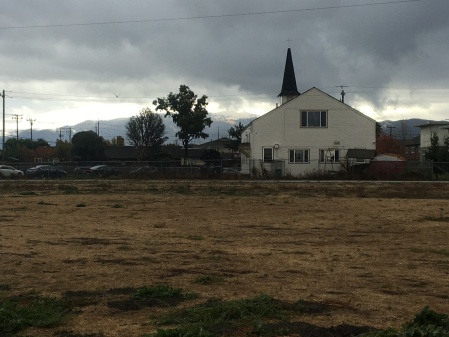





 Posted by xasauan
Posted by xasauan 